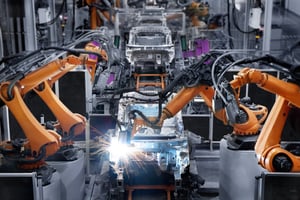When we hear the word “calibration,” we think of it as a process performed in laboratories for metrology or measurement technology. Rarely do we understand how the calibration process affects numerous everyday activities. In fact, calibration is at the center of many critical and non-critical processes and smart devices, such as home medical supplies, food and pharmaceutical production, hospitals, airplanes, automotives and even weather stations.
By definition, calibration is the process of comparing measurement values of the device being tested with a known reference. The process ensures that the values of the device being tested are within the specification boundaries for its intended use. With this definition, let’s take a deeper dive into some of the applications mentioned above:
Smart Devices
Devices such as smartphones, wearable fitness devices, smart watches and even portable tablets contain MEMS (micro-electromechanical systems) barometric pressure and temperature sensors that are used to measure altitude, ambient temperature information and even tracking fitness activity. The process of manufacturing these sensors involves characterizing and verifying them with pressure and temperature calibration references to ensure the data coming out of the smart device is accurate.
Home Medical Equipment
CPAP machines, blood pressure monitors, heart rate monitors and oxygen tanks are some of the many medical devices that are used at home to maintain and monitor critical bodily functions. Devices like intra-aortic catheters assist patients in healthy blood flow. Many of these machines have integrated low pressure gauges or sensors to determine the pressure of oxygen or air flow in the body. One of the last and most important steps in production of these devices requires each sensor to be calibrated against a higher accuracy pressure device such as a pressure controller.
Food and Pharmaceutical Production
Common packaged food and beverages go through rigorous sanitation, distillation and refrigeration processes in their manufacturing and packaging procedures. These processes require accurate pressure and temperature measurement and calibration to ensure the levels of sterilization and carbonation. High pressure digital gauges are also used to monitor leaks in these sterile vessels to avoid ambient contamination.
Hospitals
Calibration finds its way into so many different areas of a hospital, including hospital bed sensors, hypobaric and hyperbaric chambers, clean rooms, breathing apparatus, etc. Pressure chambers and clean rooms measure and maintain local barometric pressure to prevent the flow of germs from one room to the other. Hospital bed sensors detect and control optimal positions and weight balance to improve circulation and provide comfort to the patient. Breathing apparatus such as ventilators and respirators use pressure sensors to measure flow of oxygen, which is critical to patient health. Due to the nature of their criticality, all of the pressure sensors are validated for safety and performance using pressure calibrators and transducers both during their manufacturing and for periodic recalibration.
Airplanes
Airplanes contain a lot of critical measurements to ensure safe operation during flight. Some of these sensors are found in the airplane cockpit, such as altimeters and airspeed indicators. During the manufacturing and in periodic airplane maintenance, these devices are verified using air data calibrators. These calibrators use absolute and differential precision pressure sensors to simulate altitude and airspeed. Additionally, airplane engine manufacturers use high accuracy pressure transducers to calibrate on-engine sensors, as well as to verify and test engine performance.
Automotive Vehicles
 Modern vehicles have several internal systems that have a variety of sensors built in to them. Engines carry multiple pressure and temperature sensors to monitor fuel injection and flow in automotive test stands. Ambient pressure and temperature sensors are built in to the car chassis to monitor and provide ambient readout. Vehicle tire monitoring systems have pressure sensors built in to actively monitor tire pressure, and seats have a variety of pressure sensors to ensure comfort, lumbar support and airbag deployment in case of emergency. All of these sensors and subcomponents require calibration during manufacturing, assembly and the final verification process. Depending on the individual system, this can be anywhere from a low pressure pneumatic to a high pressure hydraulic calibration.
Modern vehicles have several internal systems that have a variety of sensors built in to them. Engines carry multiple pressure and temperature sensors to monitor fuel injection and flow in automotive test stands. Ambient pressure and temperature sensors are built in to the car chassis to monitor and provide ambient readout. Vehicle tire monitoring systems have pressure sensors built in to actively monitor tire pressure, and seats have a variety of pressure sensors to ensure comfort, lumbar support and airbag deployment in case of emergency. All of these sensors and subcomponents require calibration during manufacturing, assembly and the final verification process. Depending on the individual system, this can be anywhere from a low pressure pneumatic to a high pressure hydraulic calibration.
Weather Station
Everyday weather reports are provided by local or central weather stations. These weather stations use precision barometric pressure transducers and indicators, among other sensors, to report fluctuations in local ambient pressures and use this data to create isobars. These isobars are used to assess wind conditions and predict important weather events.
Conclusion
These are just few of the many everyday applications where precision metrology and calibration devices are used to improve processes and products. Moreover, calibration has several macro level applications that affect us all, such as research and education, space travel, defense applications, oil and gas exploration, petrochemical and offshore measurements and power plant maintenance.

At Mensor, we have seen a lot of calibration equipment being used in a plethora of everyday and research applications. We are constantly learning about new ways calibration and precision metrology improve our daily lives.

